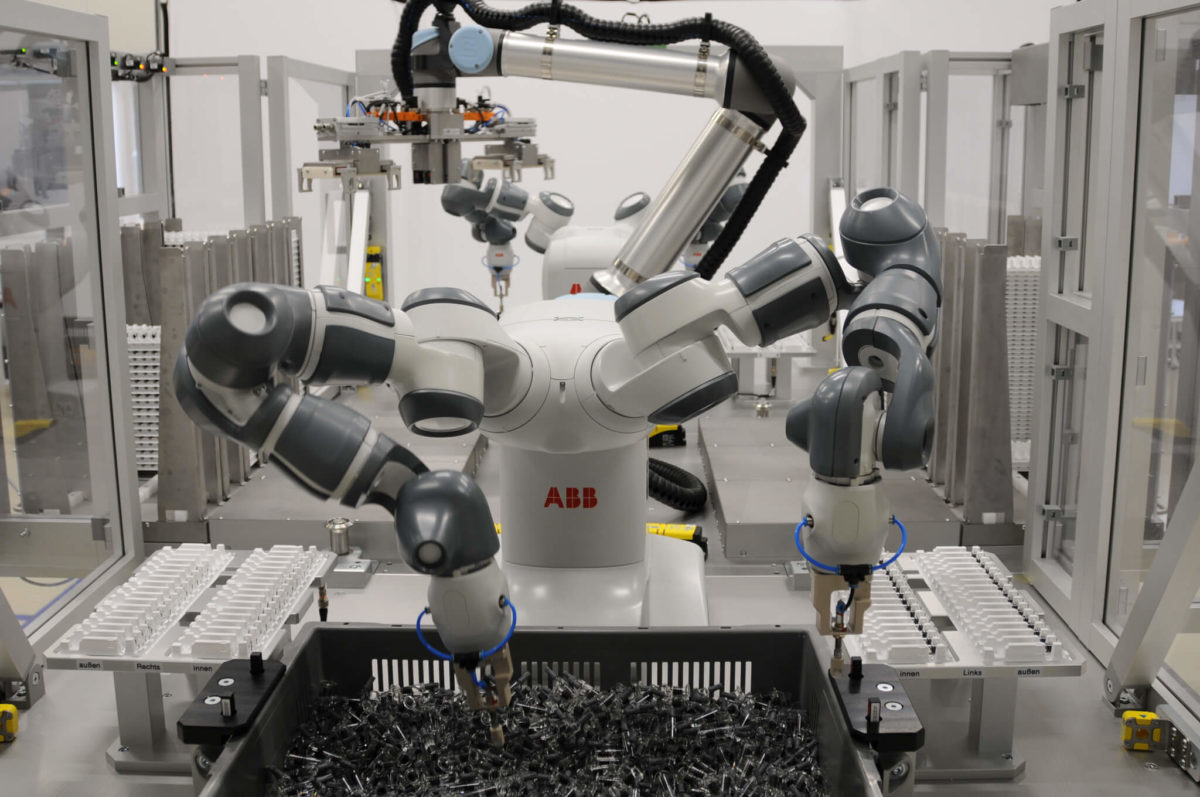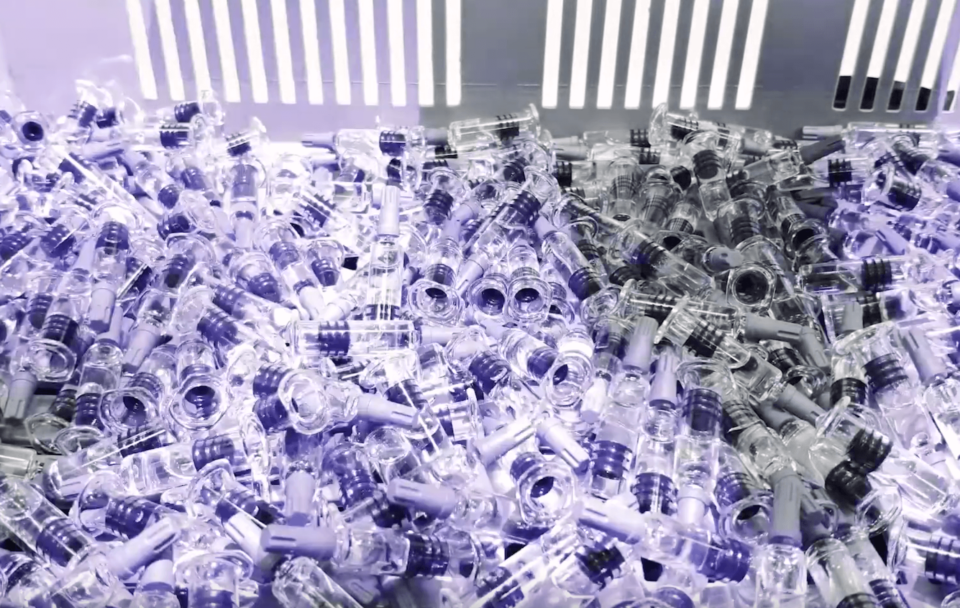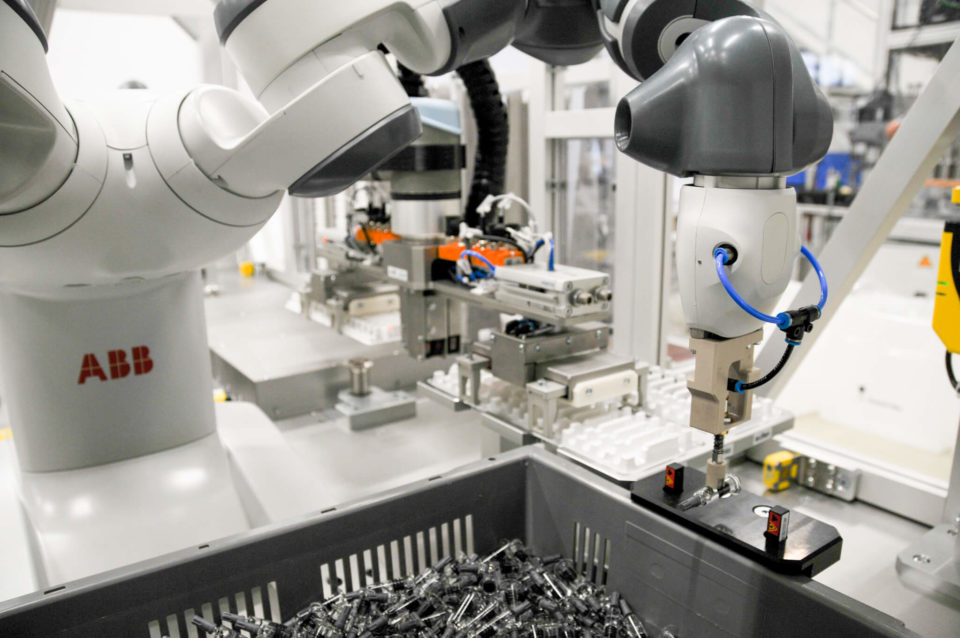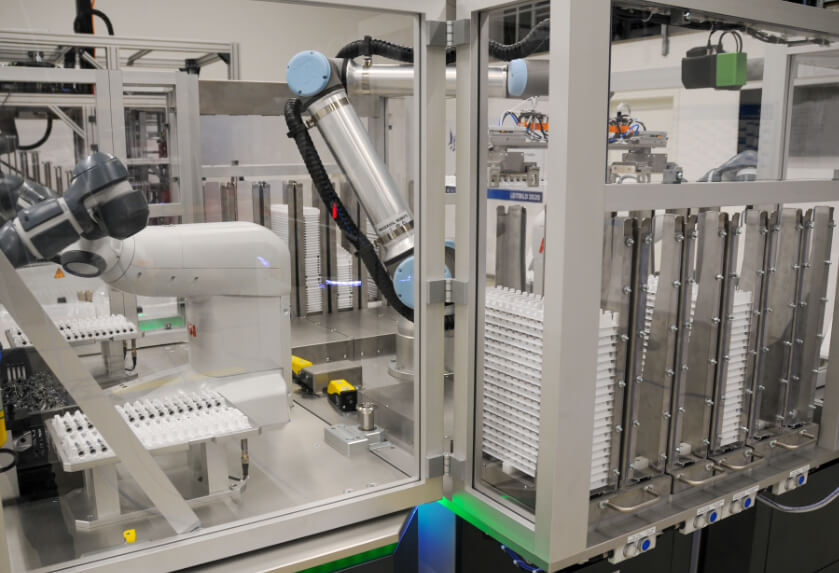Robotic Retrayer: process-reliable material separation for pharma
Is bin picking possible in pharma and biotech industries where you have a lot of delicate materials? Yes! Watch this case study how Pickit vision system helped to separate bulk syringes at high speed.
This retrayer bin picking cell was developed by our certified integrator ESSERT Robotics for Vetter pharma.
The trend
The trend towards smaller batch sizes and shorter product life cycles, mostly driven by the introduction of specialized drugs for smaller target groups brings new challenges for pharmaceutical manufacturing.
For large batch sizes production the most important factor was often the machine downtimes due to malfunctions or maintenance. Now changeover time plays the key role.
Material separation as a production step
An important sub-process in the manufacture of medication is the material separation for further processing. It is known as detraying or retraying.

This works relatively easily with tablet blisters or rectangular pharmaceutical packaging. However, when it comes to transparent syringe bodies, for example, which are delivered as bulk goods in containers or boxes, there are often employees who have to manually move the syringes into the trays provided.
The manual intervention of humans within the manufacturing process should be reduced to a minimum, especially with medical devices.
The solution: speed bin picking
The speed bin picking process enables fast cycle times, high quality standards, and flexible and easy retooling of the products. In order to remove syringes from the containers and process them further, four important factors are crucial for a safe process.
Factor #1: material detection

3D vision solves applications, where position of the parts vary, guiding the robot to bring objects from unstructured position to a structured position. In this case from a bin to a blister.
Pickit 3D is equipped to effectively handle these objects:
- Detects complex 3D shapes in bulk, from a bin. Extra challenge here is transparency of the parts, which is usually a big challenge for vision.
- The 3D camera localizes the syringes and sends the robot the exact position coordinates.
- Pickit software selects the best object to pick (something that humans do without thinking, but robots need to be taught).
- And provides robot with pick points and prevents collisions – robot knows how to grip the syringe.
The versatility of Pickit allows it to detect any part. If tomorrow you need to pick different syringes or even something else, you just need to adapt the detection settings.
Factor #2: robot
In order to do justice to the high cycle time, Essert Robotics relied on a two-arm robot that is able to grip in parallel in a humanoid process that is very human, and therefore twice as fast.
Factor #3: grasping

Thanks to a pneumatic suction gripper, the syringes can be gripped safely, glass-to-glass contact avoided and the high quality requirements in the process can be met.
Factor #4: tray handling

With the help of one or more integrated tray handling stations, full trays can be removed from the system and empty trays made available.
This means that you can react flexibly to the cycle time and the batch to be produced. In addition, an autonomy time of over 1.5 hours can be guaranteed.
The product changeover works at the push of a button. Thanks to pre-stored product types and easy-to-configure program templates, different formats of glass syringes can be separated on the system.
Maximum flexibility with a modular platform
Additional modules can be easily and simply docked onto the speed bin picking system, thus expanding the production capacity .
In contrast to a classic palletizer, a solution was created that enables different trays to be handled using simple molded parts.
With a variety of tray magazines and safe handling, it is possible to use a drawer principle to load and unload trays while the process is running.
Based on original article: ESSERT Robotics
Want to hear first about new bin picking use cases? Subscribe to our occasional newsletter.
